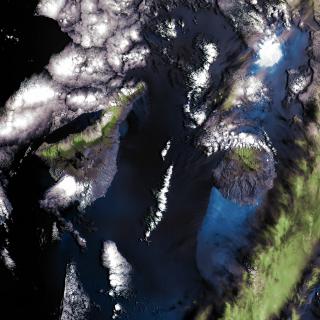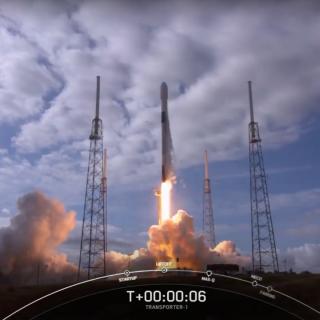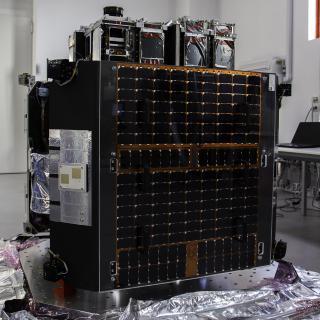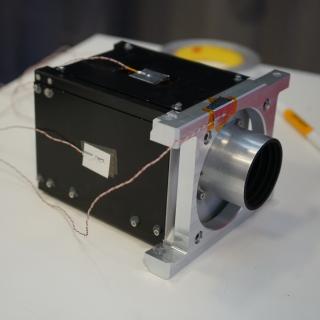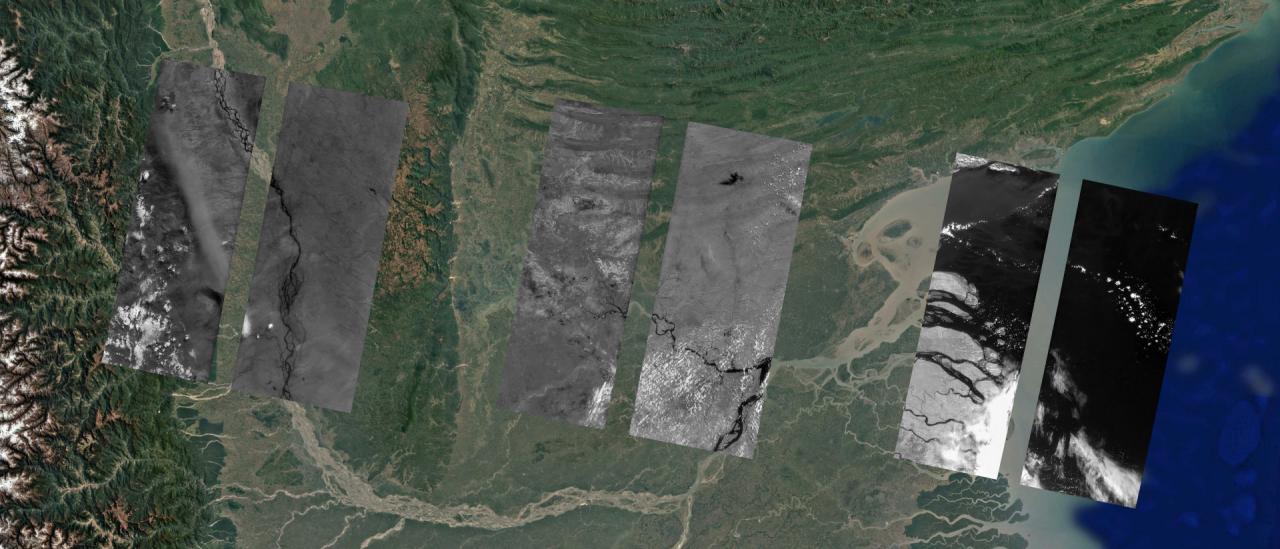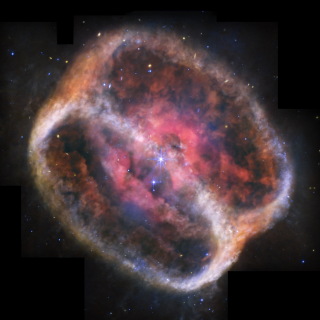DRAGO, the infrared camera developed by the team at IACTEC-Space of the Instituto de Astrofísica de Canarias, has seen its “first light”. The instrument, placed in orbit in January from Cape Canaveral is in its commissioning phase. The images taken show the mouth of the rio Meghna in the Ganges delta, the largest delta in the world. Even though it is a preliminary test, the quality of the results is well above expectation and show what DRAGO will be able to do once it is fully operational.
On January 24th 2021 the infrared camera DRAGO (Demonstrator for Remote Analysis of Ground Observations), the first instrument developed entirely within IACTEC-Space, which is integrated into the satellite carrier ION-mk02 of the Italian company D-Orbit, was successfully launched into space on a Space-X Falcon 9 rocket. Once in orbit the first contact with DRAGO took place on February 8th 2021 during which its launch survival was tested, as well as the correct working of the communications between the instrument and its ground systems. Afterwards, after testing the varios subsystems of the camera one by one, arrived the momento most awaited by all the project team, the acquisition of the first set of images or “first light.
On April 15t at around 03:45 UTC DRAGO obtained its first images from space. It was a series of stills taken in each of the two observing bands of the instrument (at 1100 and 1600 nanometre) both within the short wavelength infrared (SWIR) range. These bands are not visible to the human eye nor to conventional cameras (the images which they produced use a grey scale to represent the luminous intensity in each of the bands) and they permit studies related to humidity, desertification, the health of vegetation and the prevention of fires, among other applications.
These first test images are from regons of Bangladesh and India, including the mouth of the river Meghna in the Ganges delta. The region is also known to contain the largest mangrove forest in the world (the Sundarbans). This place is a World Heritage site, which is threatened by increasing industrial activity. The effects of the deforestation can be seen, in fact, in the images taken by DRAGO. The darkest zones of the islands show regions completely covered with forest, while the brighter zones are regions which have lost the major part of their vegetation. DRAGO’s capacity to calculate indices with its two SWIR bands will allow this level of contrast and detail to be further increased in future images.

Even though one of the main objectives of DRAGO is to obtain images of the Canaries, the choice of this regions responds to the need to point at a continental region with sufficient land surface around it to ensure that images are obtained even if there were problems in pointing the satellite. Thanks to the result of this test information has been obtained which is needed to improve the pointing in successive tests. In the coming weeks it is programmed that as the last test in the setting up plan, DRAGO will take its first images of the Canaries.
A technological success developed in the Canaries
For Álex Oscoz, the Principal Investigator of IACTEC-Microsatellites “this first set of images shows that DRAGO is perfectly functional for what it has been designed to do, to take SWIR images using a camera with a volumen, mass, and power consumption so small that they let us launch it on a very small satellite” he says. “These properties, together with the low cost of the camera components and the fact that it has been designed specifically to work in a space environment, make DRAGO a unique product on the market” adds Alfonso Ynigo, a systems engineer in IACTEC-MIcrosatellites.
From the techical point of view the analysis of these first images gives promising results. For José Alonso, the manager of IACTEC-Microsatellites “not only have we demonstrated that the camera satisfies al lthe requirements of image quality which had been set, but the initial test with super-resolution techniques show that it is possible to produce a resolution higher than the native to the detector of DRAGO”. Fort he mission the application of this kind of novel techniques is fundamental, because they permit the improvement of the quality/cost ratio in future systems of Earth observation similar to DRAGO and even better which are now being designed,
Until now obtaining this type of images in the SWIR range had been strongly linked to the field of very large satellites. In fact one of the projects from which DRAGO, in a modest way, takes its inspiration is Sentinel, and ambitious multi-satellite mission developed by the European Space Agency (ESA), within its Copernicus Programme, dedicated to keeping watch over the Earth’s land, sea and air. However the aim of DRAGO is not to complete with satellites such as those of the Sentinel consellation, but to complement their capacity by adding new technologies and observation strategies.

According to Samuel Sordo, the electronics engineer at IACTEC-Microsatellites, “designs like that of DRAGO allow us to complement the capabilities of large satellites such as Sentinel-2 with additional points of performance which are not viable with those satellites with large dimensions and huge costs, especially much shorter development times, the incorporation of cutting-edge technology, the possibility to work with large constellations, or to develop 'bespoke' applications". The engineer adds: “All of this in a much more sustainable way, because we can do it with a camera weighing little more than 1 kg, and with power consumption less than that of a LED lightbulb, which allows cost reduction by a factor of at least 100”.
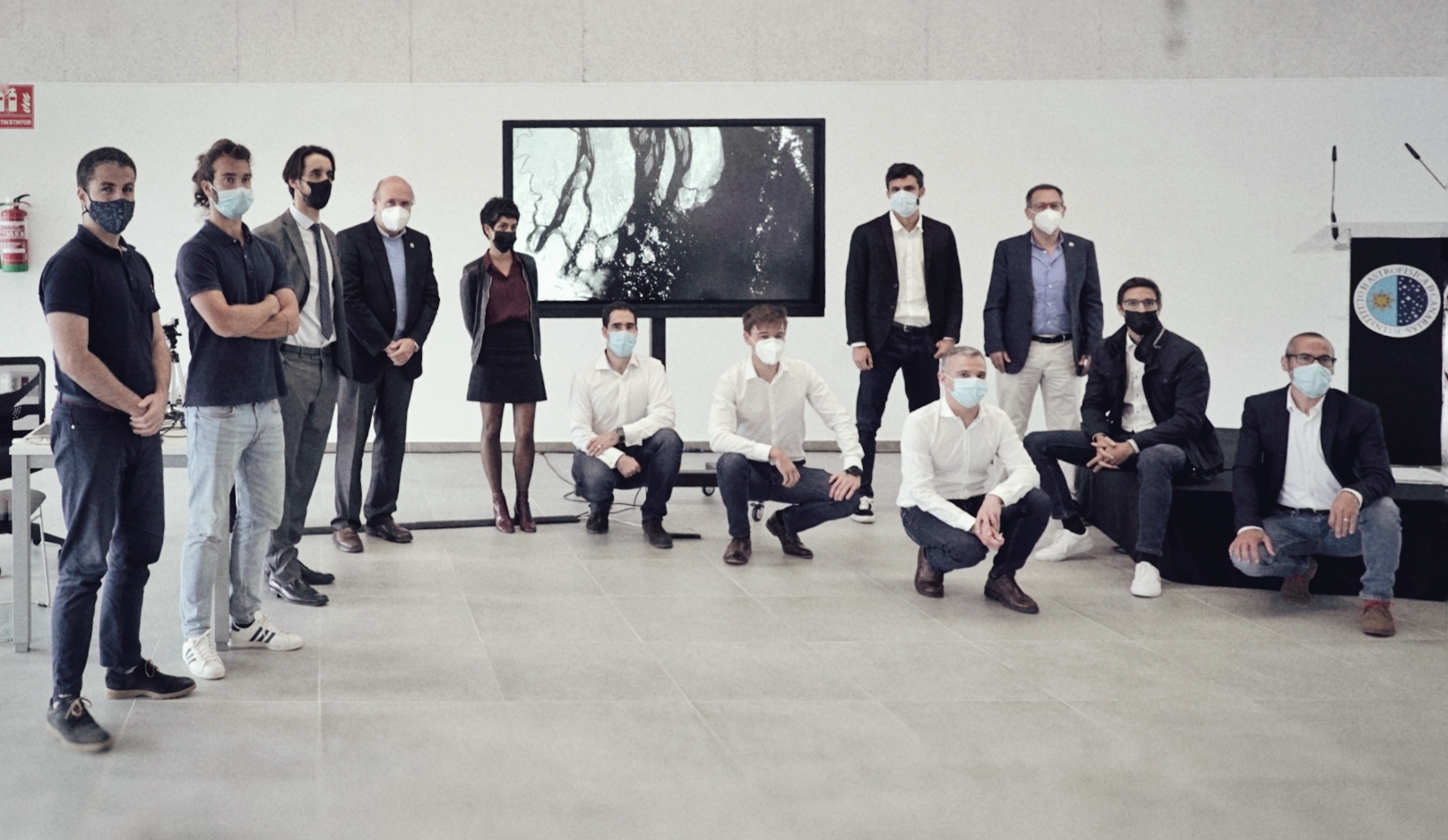
The next test with DRAGO will be to take a burst of images while the satellite moves around its orbit, at a speed which will allow the composition of a long image composed of the individual images. “This is a method similar to that used by commercial cameras to take panoramic photographs” explains Carlos Colodro, electronic engineer of IACTEC-Microsatellites who was responsible for the processing of the first DRAGO images. “Making this type focomposition will let us make colour images, where the 'colour' is the mixture of the two observation bands of DRAGO, neither of which is visible to the human eye” he said.
For Rafael Rebolo, the Director of the IAC, “the achievement of the technical objectives with DRAGO has been a key for IAC to embark on a new microsatellite project, which will have on board a small multi-purpose space telescope, with a 20 cm diameter, which astronomical objectives, and which we plan to develop over the next 5 years."
In the 4 years of the project's development, the DRAGO team has been growing, to its present total of 10 engineers. A large fraction of them have been financed by the Capacitation Programe which the Cabildo of Tenerife offers each year to the IAC. In addition, as an extra benefit, it has been instrumental in training a dozen students with grants and apprenticeship contracts. In fact the project has made a major contribution to fostering the interest in the space industry in the Canary universities, as shown by the creation of TEIDESAT, a student initiative in which IACTEC-Space is collaborating.
IACTEC-Space is a programme within IACTEC, the area of technical and business collaboration of the IAC which is fupported financially -by the Programme of Capacitation, under the Programme TFINNOVA 2016-2021 in the Marco Estratégico de Desarrollo Insular (MEDI) and the Fondo de Desarrollo de Canarias-, and through infrastructures (IACTEC building) of the Cabildo Insular de Tenerife.
More images and videos
More information:
- IACTEC Space programme website
- Report “Pequeños satélites, grandes caminos al espacio” by Irene Molla Segura
- Live broadcast of the launch (SpaceX)
- Live broadcast of launch (IACTEC+TeideSat)
Contact at IACTEC:
- Álex Oscoz: aoscoz [at] iac.es (aoscoz[at]iac[dot]es)
- José Alonso: joalbur [at] iac.es (joalbur[at]iac[dot]es)
- Alfonso Ynigo: alfynigo [at] iac.es
